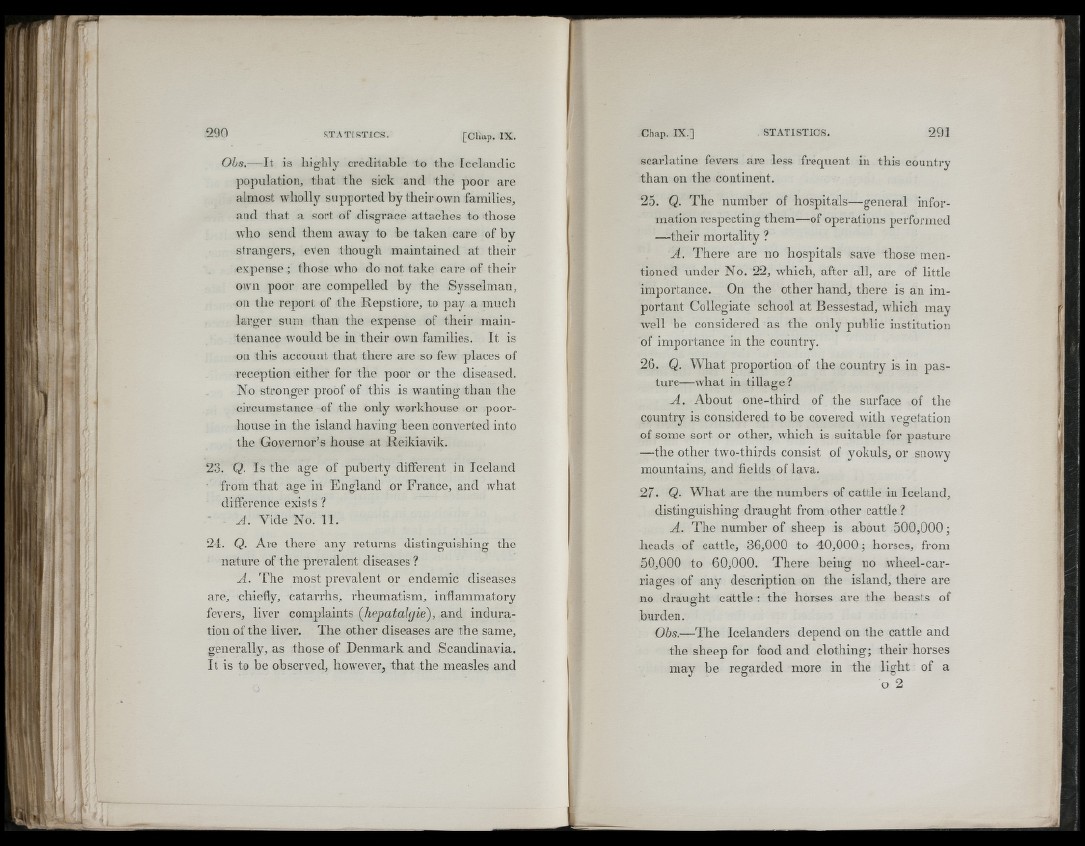
Obs.—It is highly creditable to the Icelandic
population, that the sick and the poor are
almost Avholly supported by their own families,
and that a sort of disgrace altaches to those
who send them away to be taken care of by
strangers, even though maintained at their
expense ; those who do not take care of their
OAvn poor are compelled by the Sysselman,
on the report of the Repstiore, to pay a much
larger sum than the expense of their maintenance
would be in their own families. It is
on this account that there are so few places of
reception either for the poor or the diseased.
No stronger proof of this is wanting than the
circumstance of the only workhouse or poor-
honse in the island having been converted into
the Governor’s house at Reikiavik.
23. Q. Is the age of puberty different in Iceland
from that age in England or France, and what
difference exists?
H. Vide No. 11.
24. Q. Are there any returns distinguishing the
nature of the prevalent diseases ?
A. The most prevalent or endemic diseases
are, chiefly, catarrhs, rheumatism, inflammatory
fevers, liver complaints {hepatalcjie), and induration
of the liver. The other diseases are the same,
generally, as those of Denmark and Scandinavia.
It is to be observed, however, that the measles and
scarlatine fevers are less frequent in this country
than on the continent.
25. Q. The number of hospitals—general information
respecting them—of operations performed
—their mortality ?
A . There are no hospitals save those mentioned
under No. 22, which, after all, are of little
importance. On the other hand, there is an important
Collegiate school at Bessestad, which may
well be considered as the only public institution
of importance in the country.
26. Q. What proportion of the country is in pasture—
what in tillage ?
A . About one-third of the surface of the
country is considered to be covered with vegetation
of some sort or other, which is suitable for pasture
—the other two-thirds consist of yokuls, or snowy
mountains, and fields of lava.
27. Q. What are the numbers of cattle in Iceland,
distinguishing draught from other cattle ?
A . The number of sheep is about 500,000 ;
heads of cattle, 36,000 to 40,000 ; horses, from
50,000 to 60,000. There being no wheel-car-
riages of any description on the island, there are
no drauo'ht cattle : the horses o are the beasts of
burden,
Ohs.—The Icelanders depend on the cattle and
the sheep for food and clothing; their horses
may be regarded more in the light of a
o 2